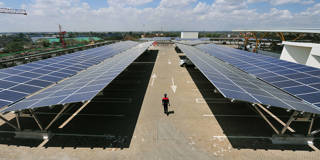The lasting effects of inflation, war, and pandemic policies in 2022 will continue to shape market conditions and generate volatility in 2023 and beyond. For those seeking stable investment returns, health care, education, energy, and China will be the biggest opportunities to watch.
LONDON – Three macro forces will continue to drive volatility in policymaking and financial markets, dominating investors and multinationals’ thinking in the months ahead. They will be watching inflation – and, concomitantly, interest rates; the war in Ukraine and its impact on global energy and food prices; and China’s faltering growth trajectory, notwithstanding the government’s phase-out of its zero-COVID policy. Together, these risks have fueled fears about persistent low growth and possibly even a global recession.

LONDON – Three macro forces will continue to drive volatility in policymaking and financial markets, dominating investors and multinationals’ thinking in the months ahead. They will be watching inflation – and, concomitantly, interest rates; the war in Ukraine and its impact on global energy and food prices; and China’s faltering growth trajectory, notwithstanding the government’s phase-out of its zero-COVID policy. Together, these risks have fueled fears about persistent low growth and possibly even a global recession.